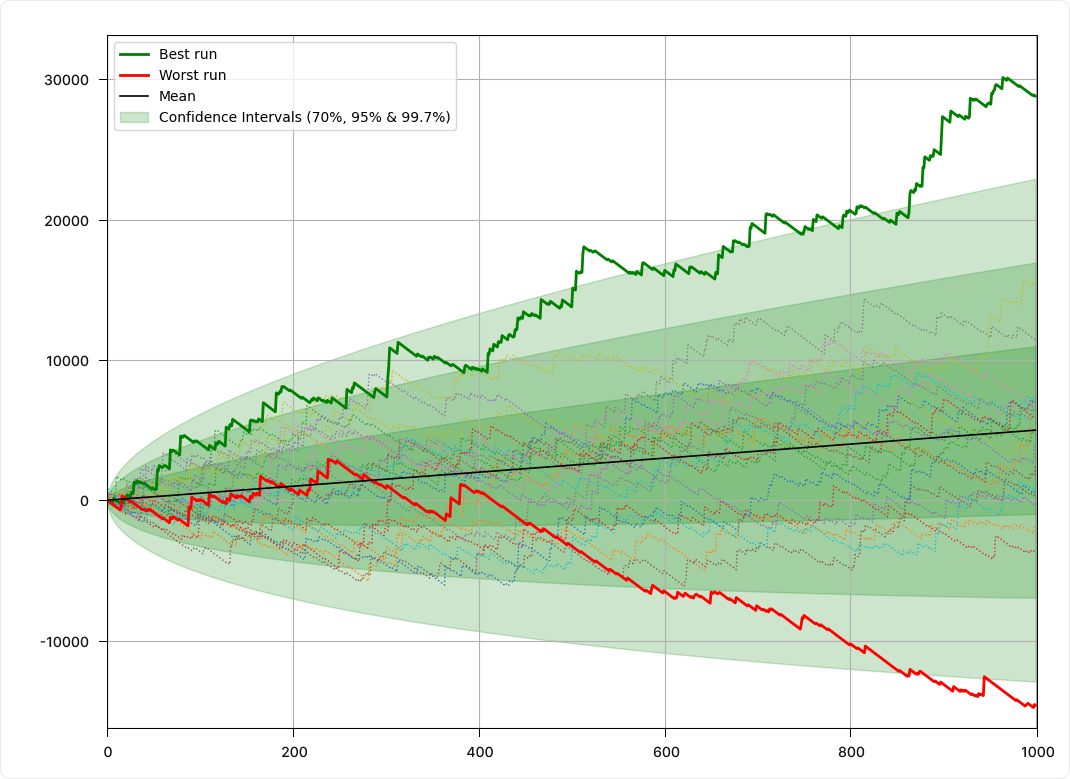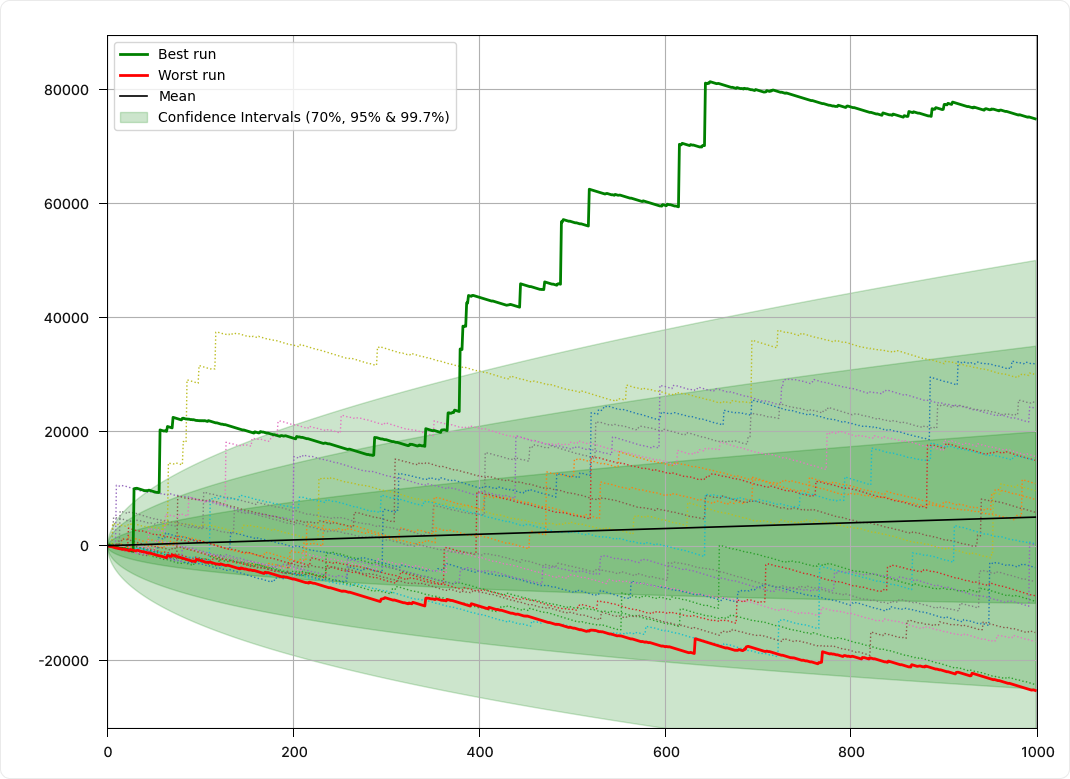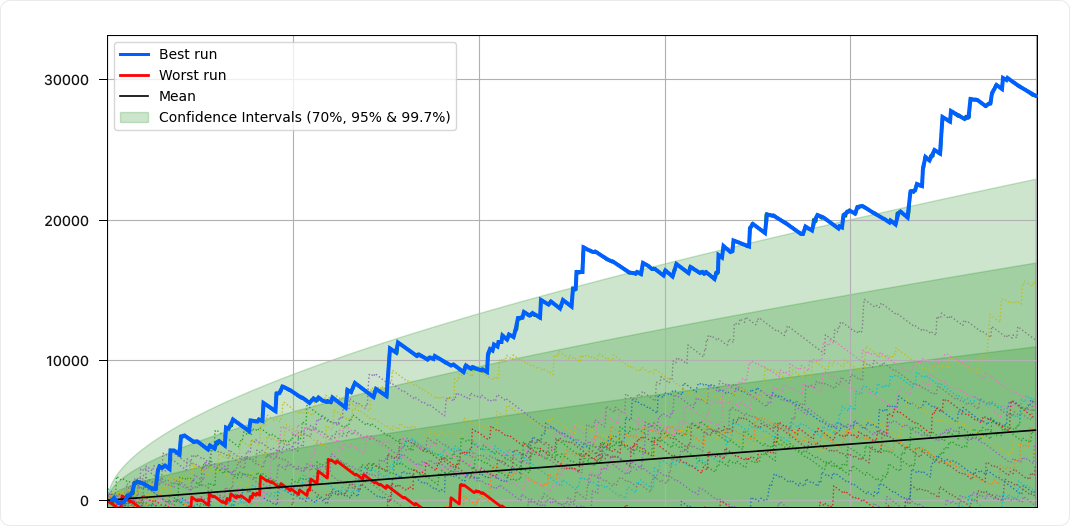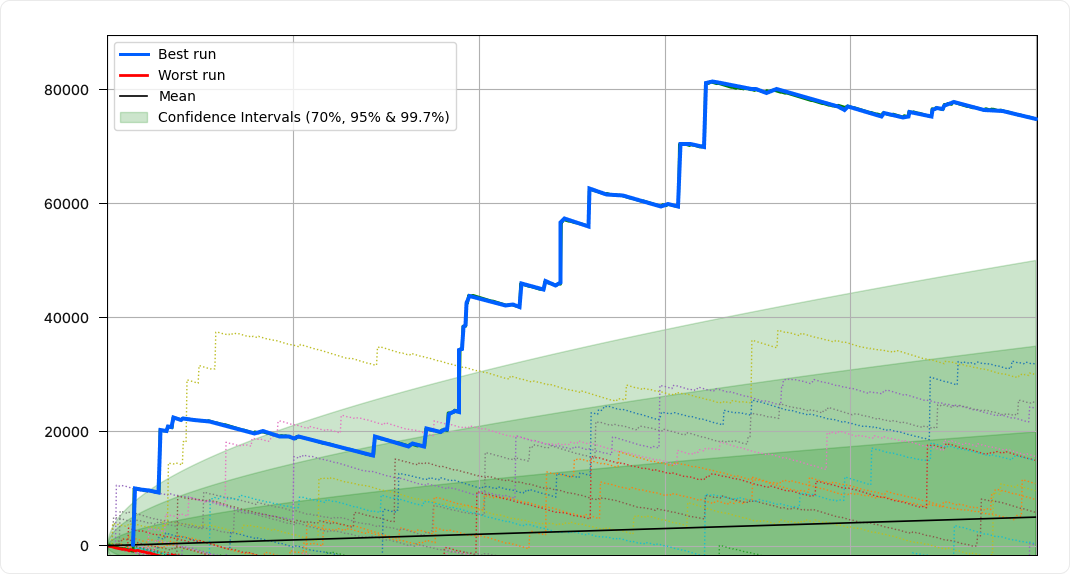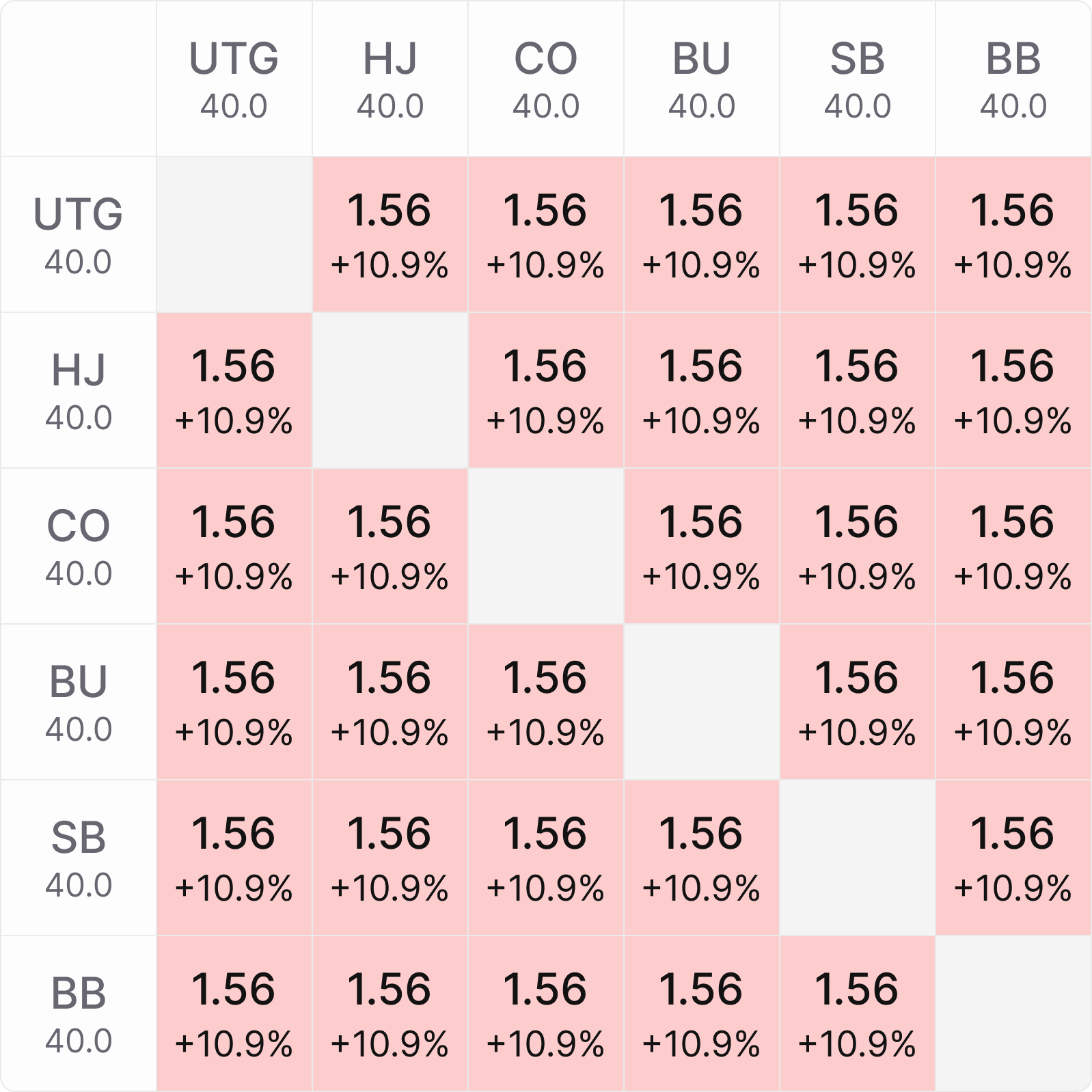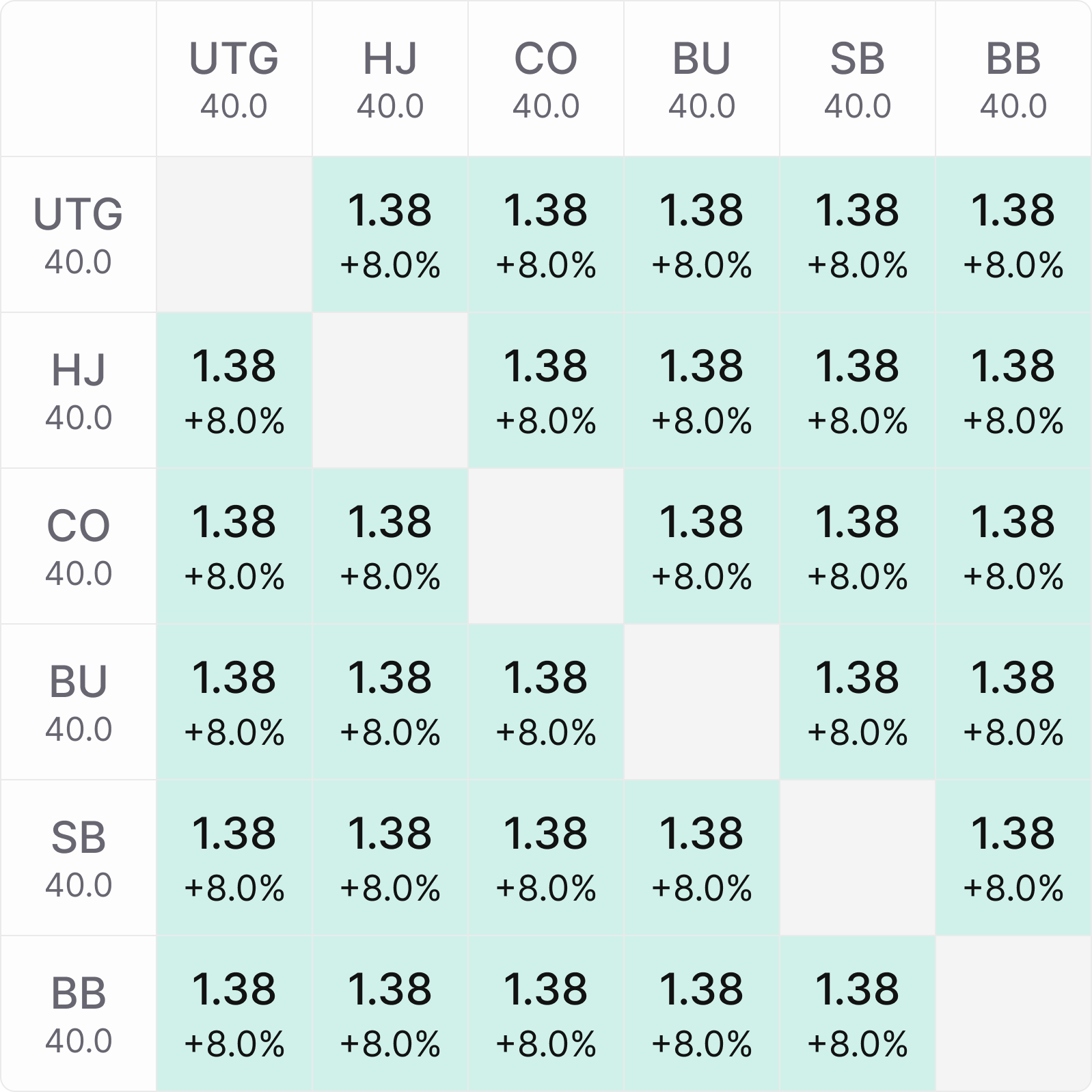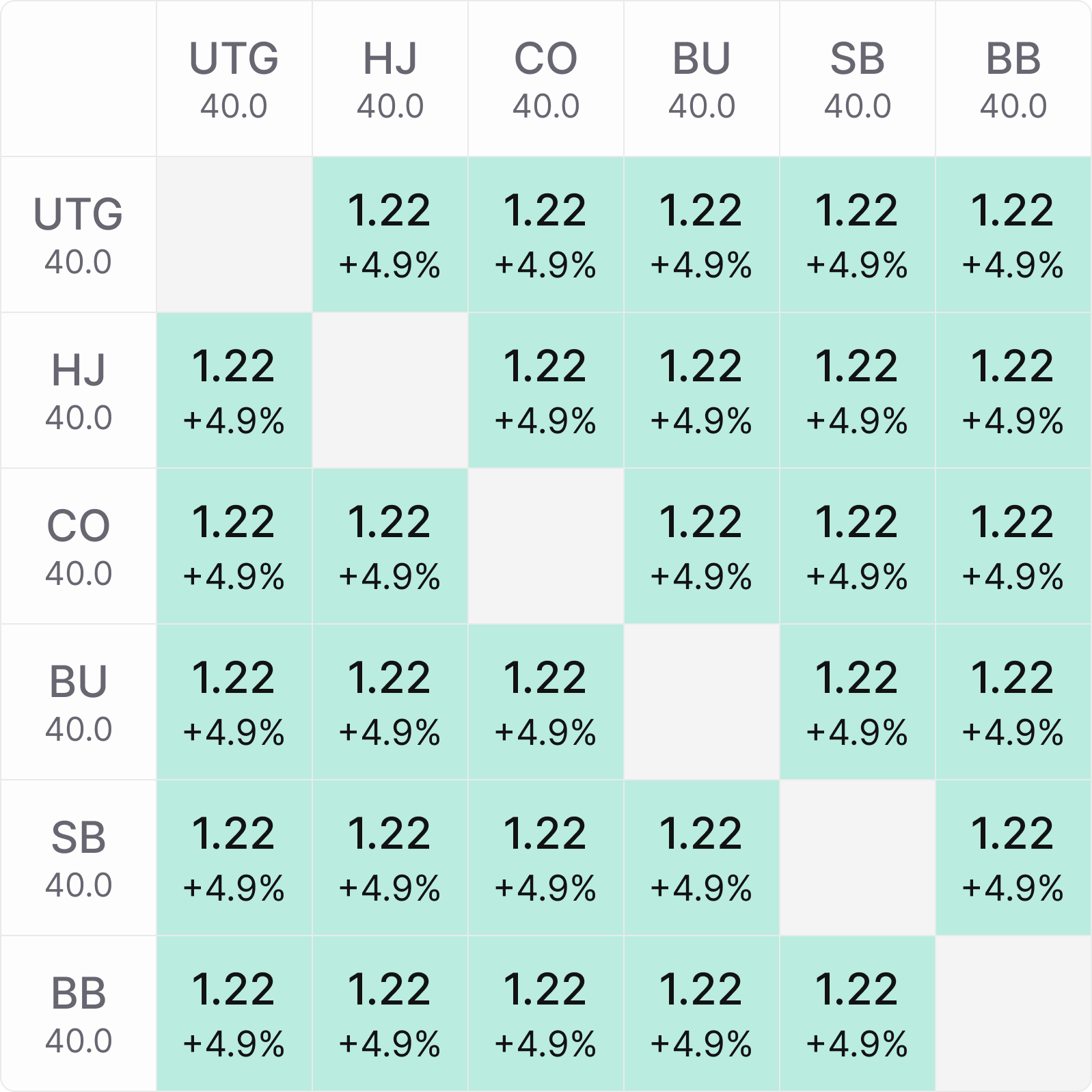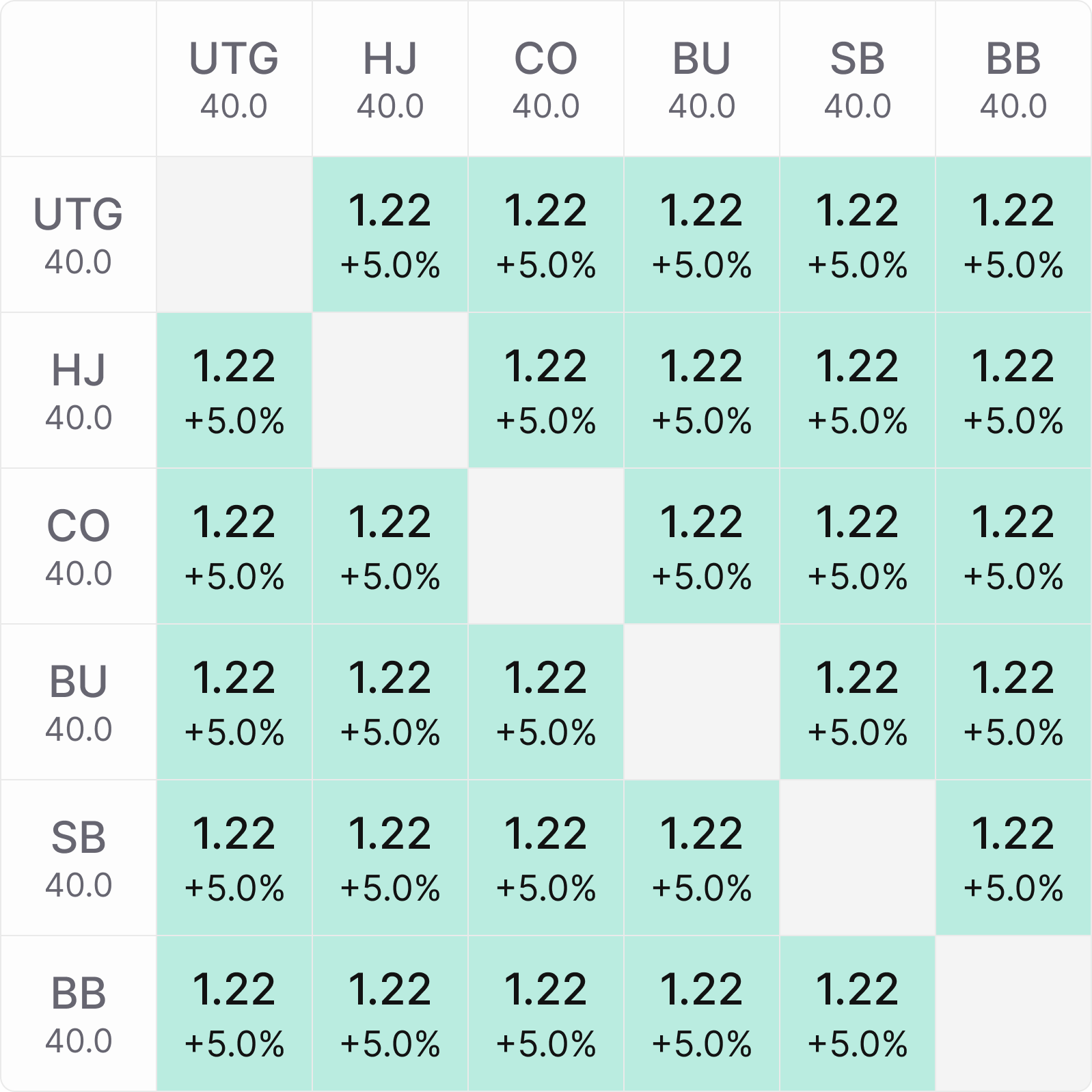Understanding The Impact Of Field Size On ICM In Poker

When people talk about game selection in multi-table tournaments (MTTs), they invariably talk about the number of recreational players there are, and/or the prize pool that is being guaranteed. What doesn’t get as much attention is the field size itself. The number of runners in the tournament is actually the most important metric to consider where game selection is concerned. Field size also plays a significant role in guiding endgame ICM strategy decisions.
Before we go further, let’s define what a large field is in MTTs. It’s a relative metric. 500 runners would be quite small in a World Series of Poker bracelet event or online in a $11 MTT at GGPoker, 100 runners is a lot in a Super High Roller or a local casino tournament. For the purposes of this article, let’s say that a small field is 150 players or less, a large field is 500 or more players, and a medium field is everything in between.
If you tell me your average field size, I could tell you a few things about your poker career. Let’s explore the reasons to play small fields or large field MTTs.
Reasons To Play Small Fields
If you play in small fields, you will invariably get more practice in tough ICM spots. If you specialize in 100-runner fields, you will get to the bubble, final table bubble, final table, and heads-up much more often. You will develop muscle memory for these spots much faster, so when a tough spot comes up you know what to do. If, however, you play 1,000+ runner MTTs then it will take longer to reach these crucial spots, and you might be rusty when you get there.
You can, of course, practice endgame spots as much as you want using GTO Wizard’s ICM database of sims. However, there is no substitute for experience in these high-equity situations. Smaller field MTTs have much less variance in them, which you can easily identify using a tournament variance calculator. Let’s compare a player in $50 MTTs with an ROI of 10% in a 100-runner MTT that pays 15 players, to the same situation in a 1,000-runner MTT that pays 150 players.
This is the 100-runner example, showing 20 sample runs of a simulation:
This is the 1,000-runner example:
The highs are higher but the lows are lower, and more frequent, in the large field simulation. We win more often in the small field simulation. There is a probability of loss of 40% after 1,000 tournaments in the large field simulation and the required bankroll is $23,069. There is only a probability of loss of 18% in the small field simulation and the required bankroll is just $8,742.
If you zoom in on the ‘Best Run’ in both examples, look at the shape of the graph to get a sense of the variance involved:
In the 100-runner field, the graph is a slow steady increase, with lots of small peaks and troughs. In the 1,000-runner field, we get a handful of sharp, steep, upswings. Crucially, there are long periods of loss with essentially no big scores. And remember, this is the best case scenario out of 20 samples
This is not a perfect comparison because as you are about to see, ROIs should be higher in larger field MTTs. If you find this interesting, check out Tombos21’s video on bankroll management.
The low variance and ICM practice both contribute to perhaps the best reason to specialize in small fields – mental game.
It is much easier to handle the swings of poker in small-field tournaments. Bubbling a final table is much easier to handle when you make them often, but bubbling a final table when you haven’t even come close in months is a tough ask.
Players who specialize in large runner fields can be doing everything right and still have losing years, they also tend to require more staking and are in makeup more often. Lots of good players have gone needlessly broke, or at least gone through periods that have made them question their own game because they prioritized large field MTTs without realizing how significant the variance is. This is also why most large field MTTs end in a final table deal of some sort, to reduce variance.
This is not an issue for players who specialize in small fields. Despite the fact they are playing against the best players in the world, the reduced variance in small-field Super High Roller events is probably very appealing to the players who frequent them, compared to playing tough $5k-$20k events with 600+ runners.
Reasons To Play Big Fields

The main reason to play in large fields is they have bigger prize pools. A single result could define your year, double your bankroll or even allow you to turn professional overnight. Winning an $11 MTT with 200 runners is nice, but winning the $11 Sunday Storm Anniversary on PokerStars could pay your bills for a year and/or allow you to move up several stakes at once.
Good players enjoy a larger edge, the bigger the field is. I believe it is GTO Wizard writer Andrew Brokos who first said this when he remarked (and I paraphrase) “a 1,000-runner field must be soft because there aren’t 1,000 good players”.
The bigger the field, the bigger your win rate should be.
Some very good players comfortably assess their ROI in a large field event like the World Series of Poker Main Event at 200+%. Compare that to something like Single Table Tournaments and the best players in the world tend to have less than a 10% edge (not a perfect comparison at all because the WSOP Main Event has a deep slow structure and SNGs tend to be fast).
I pulled a SharkScope Leaderboard winner at random who played a similar number of 6-18 man SNGs as he played 27-90 man SNGs. Here are his stats in 6-18 man SNGs:
Here they are in 27-man SNGs to 90-man SNGs:
Notice his ROI in the smaller fields is 6.9% and 9.4% in the larger fields. His ITM is a little higher too in the smaller fields.
His sample for regular MTTs, with 802 average entrants, is not as large but as you can see his ROI is much greater, it’s 20.6%:
This is an imperfect comparison for lots of reasons, but this is a solid winning player with a large sample of games in each type of field size. The ROI is greater the bigger the field becomes, but notice the green graph under the profit history – it’s much steadier in the smaller fields.
Finally, one of the reasons that the ROI is greater in the larger fields is that experience is much more valuable. Knowing how to play a tough final table bubble in a 1,000-runner MTT, and crucially not crumbling under the pressure, reaps dividends. Weak players in large fields don’t know how to navigate these tough spots – you only have to see how nitty amateur players become on the WSOP Main Event bubble to demonstrate this.
Bubble Factors & Risk Premiums
We have made the claim that large fields have a greater ROI and smaller fields have lower variance and mental game benefits. What are the big strategic differences from an ICM perspective?
The general adjustment is that the smaller the field, the tighter you should play. Locking up payouts and laddering is more important, and bubbling is a disaster, when the overall field sizes are small. ‘Playing for the win’ or at least to make the final table, by accumulating chips, is more of a priority when the fields are large. You should play looser in large-field MTTs.

We have made the claim that large fields have a greater ROI and smaller fields have lower variance and mental game benefits. What are the big strategic differences from an ICM perspective?
The general adjustment is that the smaller the field, the tighter you should play. Locking up payouts and laddering is more important, and bubbling is a disaster, when the overall field sizes are small. ‘Playing for the win’ or at least to make the final table, by accumulating chips, is more of a priority when the fields are large. You should play looser in large-field MTTs.
We can use a simple Toy Game to demonstrate this. In every example that follows we have a six-max table in a tournament where everybody has an average stack of 40BBs and 25% of the field remains. We are going to look at the Bubble Factors at this table assuming different field sizes. The reason we keep all the details identical is so that any difference in Bubble Factors must be due to the change in field size.
First of all, here they are for a 45-Man SNG on PokerStars. 11 players remain, which is 25% of the field:
The average Bubble Factor is 1.56 and the average Risk Premium is 10.9%. That means each player roughly would need 61% equity to get all-in against another player.
In the next example all the details are the same, the average stack is 40BBs, but this time it is a PokerStars 90-Man SNG. 22 players remain, which again is 25% of the field. Here are the Bubble Factors:
All the details are the same except the field has doubled in size, and the Bubble Factor has reduced to 1.38. The players now need 58% equity to call an all-in.
Let’s look at an identical spot, but this time it is a PokerStars 180-Man SNG, with 45 players remaining, which is 25% of the field again:
Now the average Bubble Factor has come down to 1.22, meaning our players need just 55% equity to call an all-in against each other.
Just for fun, I then ran this for a 1,666-runner field with 416 players remaining, which, again, is 25% of the field:
As you can see, the Bubble Factors are the same as in the last example and the Risk Premium is only slightly greater, which shows that there is a floor for how low the Bubble Factor will go in spots like this.
What this means in practical terms is that you should play looser the larger the field is.
The more runners there are in a tournament, the further away the big payouts at the final table are, so you should take more risks to get there. This should make intuitive sense because the overall prize pool is much greater as well as the field size.
In small fields, prioritizing making the money positions is more important.
The mincash is a bigger proportion of the overall prize pool, so it is more valuable. In the 45-Man example, the mincash was 3.5% of the prize pool, in the 90-Man example the mincash was 2.26% of the overall prize pool, in the 180-man the mincash was 0.65% of the prize pool, and in the 1,666-runner field the mincash was a mere 0.2% of the prize pool.
Plus when you do make the money in a small field MTT with a short stack, you are much nearer to the big final table payouts. You don’t require anywhere near the same number of double-ups to win the whole thing as you would if you did the same thing in a large field MTT.
Conclusion
The differences between small fields and large fields in MTTs are substantial, in fact, field size may be the most important factor in game selection.
Small fields are lower variance, a much better way to gain experience at every stage of a tournament, and significantly easier from a mental game perspective. You will go broke less often if you specialize in small fields and will generally have a much smoother playing experience.

The differences between small fields and large fields in MTTs are substantial, in fact, field size may be the most important factor in game selection.
Small fields are lower variance, a much better way to gain experience at every stage of a tournament, and significantly easier from a mental game perspective. You will go broke less often if you specialize in small fields and will generally have a much smoother playing experience.
Large fields are more profitable, both in terms of expectation and also the sheer monetary value of the prize pools. They are much, much swingier, and you need a much larger bankroll to play in them. The larger the field, the more important it is to play for the big prizes at the final table. In smaller fields, prioritizing not bubbling and laddering is more important because the min-cashes make up a much greater portion of the prize pool. However, it is always a balancing act. You should try to win every tournament you play and also avoid bubbling, regardless of field size.
Strategically you should play tighter and exert more ICM pressure in small-field MTTs, and play much looser in large-field MTTs. The ideal approach is to play both types of field sizes. Playing small field MTTs as a way to reduce variance and maintain a steady profit, while taking regular shots in large field MTTs. It’s still important to know the differences, however, from both a variance perspective and a strategic one.
Author
Barry Carter
Barry Carter has been a poker writer for 16 years. He is the co-author of six poker books, including The Mental Game of Poker, Endgame Poker Strategy: The ICM Book, and GTO Poker Simplified.
